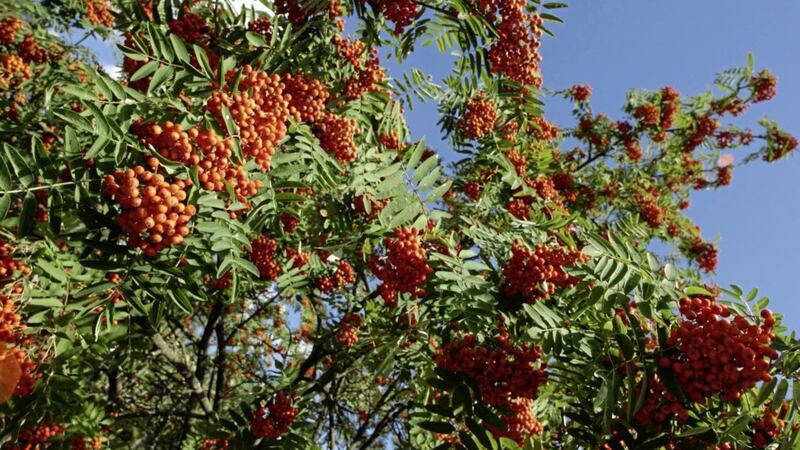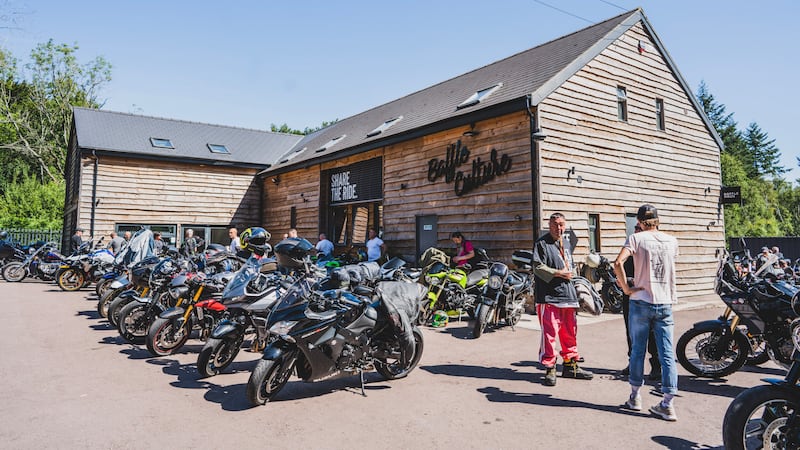IT’S said that when the autumn hedgerows are heavy with haws then there’s a harsh winter ahead. I’ve nothing scientific to support this assertion but this year the yield from the hawthorn appears plentiful, so you may wish to invest in some new thermals.
The haws, hips and berries on branches with an eastern aspect are especially eye-catching when lit by the morning sun. But while we humans can derive pleasure from the hedgerows’ autumnal display, the fruits from the likes of hawthorn, blackthorn and guelder rose fulfil a much more vital role for wildlife: providing much-needed winter food. Blackbirds, warblers and the all too rare yellowhammer are among the birds that forage for sustenance in these linear habitats.
Berries – fleshy fruits with seeds – are a bacciferous or baccate plant’s key to reproduction. They begin life as a flower and develop over the growing season, with the outer layer of the flower’s ovary gradually transforming into the fruit’s edible fleshy portion. In botanical terms, blackberries, raspberries and strawberries aren’t strictly speaking berries, as they contain seeds from different ovaries of a single flower, hence the name ‘aggregate fruit’.
A ripened berry is typically of contrasting colour to its host plant, which ensures they are visible and attractive to animals (and some humans) which will help its dispersal (through digestion and droppings) and the species’ survival.
Some snobbery and a degree of ignorance mean the small trees and shrubs that make up traditional Irish hedgerows are rarely used in domestic gardens but one notable exception is the rowan (Sorbus aucuparia), also known as mountain ash.
A medium-sized tree that is happy at altitude, rowans provide a bounty of bright scarlet berries in the autumn, a rich source of food for the aforementioned blackbird, as well as mistle thrushes and visiting waxwings. Mountain ash varieties with alternative coloured berries include Sorbus 'Joseph Rock' Tree (yellow) and and Sorbus hupehensis 'Pink Pagoda' (pink).
A good fruit-bearing evergreen is Cotoneaster dammeri, which has prostrate habit, making it ideal for ground cover in rockeries. It has white flowers turning into red berries and will reach less than one foot in height but covering an area of up to four square metres.
If you prefer your contoneasters upright try C. lacteus, an evergreen with veined, elliptical leaves that are dark green on the upper side and white underneath. Growing up to four metres in height, it has arching, free-flowing branches and sports creamy-white flowers and red fruits.
Pyracantha’s sharp and unforgiving thorns make it a great shrub for deterring garden intruders but this evergreen also produces a dazzling amount of berries in the autumn, ranging from deep reds to bright yellow. Recommended varieties include P. 'Golden Charmer', with clusters of small white flowers and glossy green leaves giving way to eye-catching, long-lasting orange berries. For a good display of yellow berries try P. 'Soleil d’Or’.
A little less constrained in habit but equally thorny and profuse in berries is berberis. Late spring’s yellow or burnt orange flowers make way for red or purple berries often against a backdrop of fiery foliage. Available as both deciduous and evergreen, and happy in full sun or semi-shade, Berberis are generally unfussy shrubs.
Evergreen B. darwinii delivers clusters of orange flowers followed later in the year by purple berries. For classy golden flowers and purple berries opt for B. verruculosa. Good compact varieties for containers are ’Aurea' and the low-growing B. thunbergii atropurpurea 'Bagatelle' which has dark red leaves in which the berries are camouflaged.








